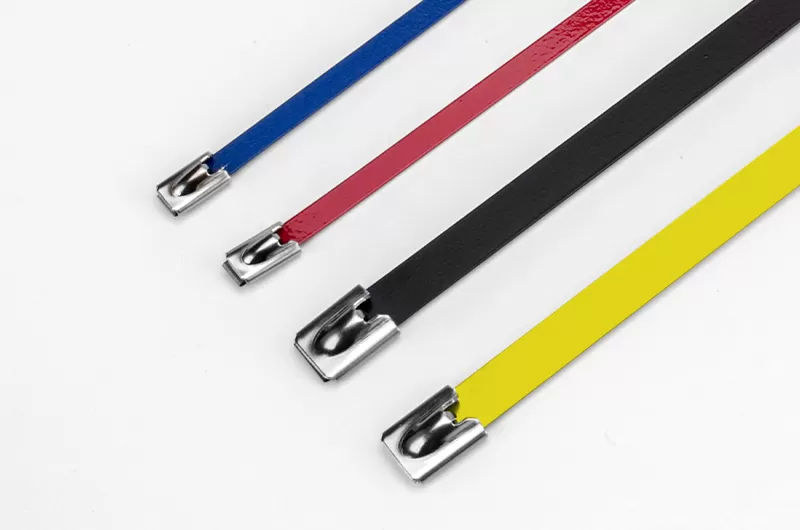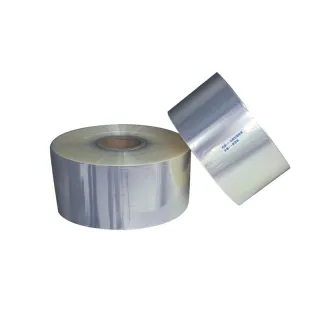Exploring the Durability of Stainless Steel Cable Ties
Stainless steel cable ties have long been favored in various industries for their exceptional strength, durability, and resistance to corrosion. However, a common concern among users is whether these ties are prone to rust over time. In this comprehensive guide, we delve into the intricacies of stainless steel cable ties to address this question and provide valuable insights for users seeking reliable fastening solutions.

Stainless steel is renowned for its ability to resist corrosion and oxidation in various environments, making it a popular choice for applications requiring durability and longevity. The key to its corrosion resistance lies in its composition, primarily consisting of iron, chromium, nickel, and other alloying elements. Chromium, in particular, forms a passive oxide layer on the surface of the steel, preventing rust and corrosion from penetrating the material.
Factors Influencing Rust Resistance
While stainless steel cable ties boast impressive resistance to rust, several factors can influence their long-term performance:
Grade of Stainless Steel
Stainless steel is available in different grades, each offering varying levels of corrosion resistance. The most common grades for cable ties include 304 and 316 stainless steel. Grade 316 contains additional molybdenum, enhancing its resistance to chloride corrosion, making it particularly suitable for marine and coastal environments.
Environmental Conditions
The environment in which stainless steel cable ties are deployed plays a significant role in their longevity. Harsh conditions such as high humidity, exposure to saltwater, or chemical pollutants can accelerate corrosion. Proper selection of the grade and regular maintenance can mitigate these risks.
Installation Practices
Improper installation techniques, such as over-tightening or using incompatible tools, can damage the protective oxide layer on stainless steel cable ties, leaving them susceptible to rust and corrosion. Following manufacturer recommendations and employing correct installation procedures is crucial for ensuring optimal performance.
Benefits of Stainless Steel Cable Ties
Despite the potential for rust in certain conditions, stainless steel cable ties offer numerous advantages that make them a preferred choice for various applications:
Exceptional Strength
Stainless steel cable ties are renowned for their high tensile strength, providing reliable fastening solutions for Heavy Duty Zip Tie. They can withstand extreme loads without compromising performance, making them ideal for securing cables, pipes, and other components.
Further reading:What is VCI film?
Revolutionizing Efficiency: The Multi-Function Packaging Machine
How Many Times Can A Glass Ampoule be Used?
What is Kraft Wrapping Paper, and How is it Different from Regular Gift Wrapping Paper?
Corrosion Resistance
In most environments, stainless steel cable ties exhibit excellent resistance to rust and corrosion, ensuring long-term reliability even in challenging conditions. Proper selection of the grade and regular maintenance can further enhance their durability and performance.
Versatility
Stainless steel cable ties are versatile fastening solutions suitable for a wide range of applications across industries. From industrial settings to marine environments, they offer reliable performance in diverse conditions, making them a preferred choice for professionals worldwide.
Maintenance Tips for Longevity
To maximize the lifespan of stainless steel zip ties and minimize the risk of rust, consider the following maintenance tips:
Regular Inspection: Periodically inspect cable ties for signs of damage or corrosion, especially in harsh environments.
Proper Cleaning: Clean cable ties using mild detergent and water to remove dirt and contaminants that could compromise their performance.
Avoid Contact with Corrosive Substances: Minimize exposure to chemicals, saltwater, and other corrosive substances that can accelerate rust formation.
Use Compatible Tools: When installing or adjusting cable ties, use tools specifically designed for stainless steel fasteners to prevent damage to the material.
By following these maintenance practices, users can prolong the lifespan of stainless steel cable ties and ensure reliable performance in various applications.
Conclusion
In conclusion, stainless steel cable ties offer exceptional durability and resistance to rust, making them a reliable choice for fastening applications across industries. While the potential for rust exists in certain conditions, proper selection of the grade, adherence to installation best practices, and regular maintenance can mitigate these risks and ensure long-term performance. By understanding the factors influencing rust resistance and implementing appropriate measures, users can harness the full potential of stainless steel zip ties for their applications.
Further reading:Choosing the Right Dry Sublimation Paper for Your Printing Needs
The Difference Between Natural Casing and Artificial Casing
What is anti-static film?
- 0

- 659
- 0
- 0





